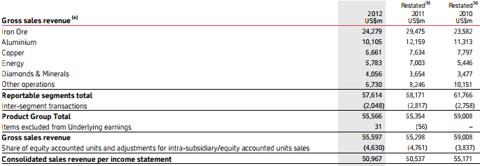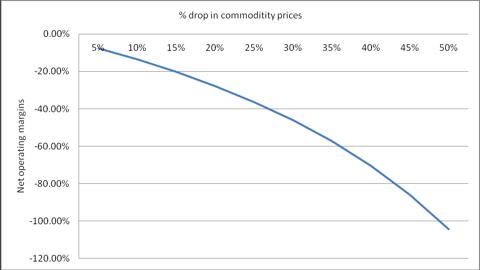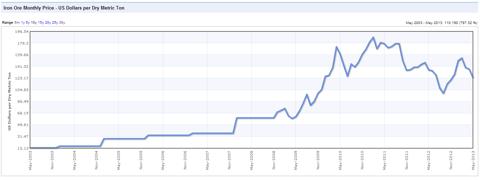After the long holiday weekend, market participants were given some great news this morning: Consumer confidence has hit a five-year high. Industry group The Conference Board claims that consumer attitudes jumped to 76.2 from a revised 69 in April. Most estimates had pinned the number at 71, so this was quite the surprise. �
As of 11:45 a.m. EDT, the Dow Jones Industrial Average (DJINDICES: ^DJI ) is up 159 points, or 1.04%. The S&P 500 has risen 19.62 points, or 1.19%, while the Nasdaq has gained 44 points, or 1.28%. Investors seem to have all but forgotten about the possible Fed slowdown, which everyone was so fearful of last week, and at this time all but one of the Dow's 30 components are moving higher.
Besides the consumer confidence number, a positive housing report also reached investors today, and is likely the reason shares of Home Depot (NYSE: HD ) rose 1.72%. The better-than-expected home price report showed that in March prices once again rose, and year-over-year gains have now risen 11%. With home prices continuing to climb, Home Depot should continue to see increased business levels, which will likely be followed by higher profits. �
10 Best Mid Cap Stocks To Buy For 2014: PCCW Ltd (0008.HK)
PCCW Limited is a Hong Kong-based holding company. Its subsidiary HKT provides telecommunications and related services, including local telephony, local data and broadband, international telecommunications, mobile, customer premises equipment sale, outsourcing, consulting and contact centers, primarily in Hong Kong, mainland China and elsewhere in the world. Media Business includes interactive pay- television (TV) services, Internet portal multimedia entertainment platform and the Company�� directories operations in Hong Kong and mainland China. Solutions Business offers Information and Communications Technologies services and solutions in Hong Kong and mainland China. Pacific Century Premium Developments Limited covers the Company�� property portfolio in Hong Kong and mainland China, including the Cyberport development in Hong Kong, and elsewhere in Asia. Other Businesses include the Company�� wireless broadband business in the United Kingdom and all corporate suppo rt functions.
10 Best Mid Cap Stocks To Buy For 2014: NCC Group Plc(NCC.L)
NCC Group plc provides information technology assurance and protection services to the public and private sectors worldwide. The company operates in two segments, Escrow and Assurance Testing. The Escrow segment ensures source code, data, or other business critical material is protected and accessible, as well as confirms the material held is protected by verifying that could be rebuilt from its source code components. The Assurance Testing segment provides site confidence services, including testing and monitoring relevant aspects of system, network, and Web site performance to ensure that the technology used could deliver optimum performance. It also offers security testing services, including forensics, vulnerability research, and the development of software to aid organizations in their on-going with information security breaches; and penetration testing, secure systems development, security education, software design verification, and security assessments. This segmen t also conducts security audits; and offers strategic advisory services for card manufacturing, data preparation, and personalization, as well as provides business analysis, project management, test resourcing, network and application performance analysis, functional and non-functional testing, test automation, software testing, and tools training. The company was founded in 1999 and is headquartered in Manchester, the United Kingdom.
Cardia Bioplastics Limited engages in the development, manufacture, and marketing of sustainable resins derived from renewable resources for packaging and plastic products industries. The company offers biohybrid resins, a blend of renewable thermoplastic materials and traditional polyolefins; and compostable resins and biodegradable materials for various applications, such as films, coatings and laminates, injection moldings, blow moldings, and extrusions. It also designs, develops, and produces ready to use finished goods, including films and bags. In addition, the company?s products are also used in the flexible packaging applications, including flexible films for food and non-food applications, shrink wrap, protective packaging films, carrier bags, waste management bags, and sacks. It operates in Australia, the Americas, Europe, and Asia. The company was formerly known as Cardia Technologies Limited and changed its name to Cardia Bioplastics Limited in July 2009. Card ia Bioplastics Limited was founded in 2002 and is based in Hawthorn, Australia.
10 Best Mid Cap Stocks To Buy For 2014: Crown Crafts Inc.(CRWS)
Crown Crafts, Inc., through its subsidiaries, offers infant and toddler products primarily in the United States. Its products include crib and toddler bedding, blankets, nursery accessories, room d
10 Best Mid Cap Stocks To Buy For 2014: Cheung Kong (1)
Cheung Kong (Holdings) Limited is a Hong Kong-based company engaged in investment holding and project management. The Company�� subsidiaries are engaged in property development and investment, hotel and serviced suite operation, property and project management, and investment in securities. It is also engaged in information technology, e-commerce and new technology. As of December 31, 2011, the Company�� investment properties included retail shopping malls and commercial office properties in Hong Kong, which accounted for approximately 44% and 45%, respectively of the turnover of the Company�� property rental. As of December 31, 2011, the total floor area under the Company�� property management was approximately 88 million square feet. As of December 31, 2011, its subsidiaries included Alcon Investments Limited, AMTD Group Company Limited, Bermington Investment Limited and others.
10 Best Mid Cap Stocks To Buy For 2014: Running Fox Resource Corp. (RUN.V)
Running Fox Resources Corporation, a resource sector company, engages in the exploration and development of mineral resource properties in Canada. The company owns 100% interests in the Brett Gold and Silver Project located in the north Okanagan region of southwest British Columbia. It also has an option interest in the Pincher Creek oil and gas Project located in Alberta. The company was incorporated in 1981 and is based in Claresholm, Canada.
10 Best Mid Cap Stocks To Buy For 2014: Odyssey Marine Exploration Inc.(OMEX)
Odyssey Marine Exploration, Inc. provides shipwreck exploration services for use in insurance investigations, and search and recovery operations to governments and deep-ocean mineral exploration companies. The company?s shipwreck projects consist of various activities, including research and development, and search operations; archaeological excavation and recovery operations; and conservation, recording, and documentation. It also sells shipwreck findings, including coins and other mass-produced cargo, cultural collections, and replicas to collectors, museums, and other institutions. Odyssey Marine Exploration, Inc. was founded in 1986 and is headquartered in Tampa, Florida.
10 Best Mid Cap Stocks To Buy For 2014: Williams Partners L.P.(WPZ)
Williams Partners L.P. focuses on natural gas transportation, gathering, treating and processing, storage, natural gas liquid fractionation, and oil transportation activities in the United States. The company operates in two segments, Gas Pipeline, and Midstream Gas and Liquids. The Gas Pipeline segment owns and operates approximately 13,900 miles of pipelines with annual throughput of approximately 2,700 trillion British thermal units of natural gas and delivery capacity of approximately 13 million dekatherms of gas. This segment also owns interests in joint venture interstate and intrastate natural gas pipeline systems. The Midstream Gas and Liquids segment includes natural gas gathering, processing, and treating facilities; and crude oil gathering and transportation facilities that serve the producing basins in Colorado, New Mexico, Wyoming, the Gulf of Mexico, and Pennsylvania. Williams Partners GP LLC serves as the general partner of the company. Williams Partners L.P . was founded in 2005 and is based in Tulsa, Oklahoma.
Advisors' Opinion: - [By Louis Navellier]
Williams Partners (NYSE:WPZ) is an integrated natural gas company that is involved with exploration and production, midstream gathering and processing and interstate natural gas transportation. In the last nine-and-a-half months, WPZ stock has gained 18% since January 2011.
10 Best Mid Cap Stocks To Buy For 2014: Under Armour Inc.(UA)
Under Armour, Inc. develops, markets, and distributes performance apparel, footwear, and accessories for men, women, and youth primarily in the United States, Canada, and internationally. It offers products made from moisture-wicking synthetic fabrics designed to regulate body temperature and enhance performance regardless of weather conditions. The company provides its products in three fit types: compression (tight fitting), fitted (athletic cut), and loose (relaxed) extending across the sporting goods, outdoor, and active lifestyle markets. Its footwear offerings comprise football, baseball, lacrosse, softball, and soccer cleats; slides; performance training footwear; and running footwear. The company also provides baseball batting, football, golf, and running gloves, as well as licenses bags, socks, headwear, custom-molded mouth guards, and eyewear that are designed to be used and worn before, during, and after competition. Under Armour sells its products through retai l stores, as well as directly to consumers through its own retail outlets and specialty stores, Website, and catalogs. The company was founded in 1996 and is headquartered in Baltimore, Maryland.
Advisors' Opinion: - [By Fernandez]
Under Armour designs, develops, markets, and distributes performance apparel, footwear, and accessories for men, women, and youth primarily in the United States and Canada.
You’ve probably seen the company’s “Protect This House” or “Click-Clack” commercials, and probably seen anyone from the weekend warrior to professional sports teams wearing the company’s moisture-wicking synthetic fabrics, which are designed to keep perspiration away from the skin, and regulate body temperature regardless of weather conditions.
I must admit for full disclosure that I am an Under Armour nut, and own about 20 pairs of their shorts, shirts and shoes.
I can attest from personal experience as a natural bodybuilder and athlete that the Under Armour apparel are the best workout clothing I have ever worn, and they look pretty darn cool too.
Now let me make a clear distinction between a great company, and a great stock.
Up until recently, Under Armour was the former, but not the latter.
It has now entered into a zone where the valuation metrics, even in the face of a consumer slowdown, is looking more and more attractive.
In fact, Under Armour just released earnings Monday.
They were pretty much in line with analyst’s expectations, and then Under Armour slightly lowered their forward guidance for the remainder of 2008 based on those same consumer headwinds.
The market liked what it heard sending shares up 20% (of course, the overall market was up 10%, so…). Shares have since rebounded further are now up almost 50% from their lows just last week!
This leads me to my investment thesis in shares of Under Armour.
I believe that Under Armour represents one of the quintessential brands of this decade when it comes to sports apparel, the way Under Armour’s fiercest rival Nike (NYSE: NKE) dominated the 90’s.
Until now the valuation of the company was not commensurate with the! projected profit and growth, which I thought were way too high, and still might be, along with certain inventory related problems that the company now seems to be getting a handle on.
Still, with the spike in share price, along with the uncertainty in the market and overall economy, I feel that we will still be able to purchase shares of this great company at a great price in the near future and that we’re seeing a bit of a short squeeze in shares of Under Armour.
Why I Like the Company: One of the quintessential brands of this decade; Valuation is reaching reasonable to “cheap” levels depending on direction of consumer market and Under Armour’s stock price; Dedicated and fully invested founder with over 77% voting power via class B shares; Improved business fundamentals via better inventory controls and operational structure, and new product offerings; Further expansion available outside the U.S.; Relatively higher margins than competition
- [By Glenn]
Current Price: $27.27 12-month target: $37
I see potential in opportunities for new product adjacencies, and expanding distribution worldwide. Footwear growth will continue to increase. Revenues for these products have increased over 69% in 2009. Adding to this I still see growth in Under Armour’s apparel sales, which are up 8%. Under Armor had yet to even break into the international market, which offers a plethora of new opportunities for this growing brand. I believe sales will rise drastically in 2010 driven by international sales, new women’s clothing line, and expansion within their own footwear line. - [By Roger]
Under Armour (NYSE:UA), a maker and designer of apparel, footwear and accessories that target sports enthusiasts, has more than doubled in one year. But despite the advance, many research firms still have a “strong buy” recommendation on the stock. And S&P recently revised its annual target to $93.
Technically UA has advanced on a series of stair steps, sometimes called “base moves.”? These are very bullish formations that resemble cups. UA reversed up recently following a signal from our proprietary Collins-Bollinger Reversal (CBR) indicator. If the recent pullback to its 50-day moving average (blue line) holds, then the next move up should break the prior high with a target of $85.
Traders could take risk positions now with a target of $85 to $90. But be careful and use stop-loss orders to protect against a violent reversal, which could drop prices back to support at $62 where this volatile stock could be bought again.
10 Best Mid Cap Stocks To Buy For 2014: Koninklijke Philips Electronics N.V.(PHG)
Koninklijke Philips Electronics N.V. engages in the healthcare, consumer lifestyle, and lighting product businesses worldwide. The company offers screening, diagnosis, treatment, monitoring, and health management services in cardio-pulmonary, oncology, and women?s health areas. Its healthcare products and solutions include X-rays, computed tomography, magnetic resonance, nuclear medicine, and ultrasound imaging equipment; and cardiology informatics and diagnostic electrocardiography, radiology information systems, picture archiving and communication systems, patient monitoring and clinical informatics, perinatal care, and therapeutic care systems. The company?s healthcare products and solutions also consist of sleep management and respiratory care, medical alert, remote cardiac, and remote patient management services. In addition, it offers consultancy, site planning and project management, clinical, education, equipment financing, asset management, and equipment mainten ance and repair services. The company?s consumer lifestyle products and solutions comprise mother and childcare, oral healthcare, male grooming, skincare, and beauty products; coffee, floor and garment care, kitchen, water and air, and beverage appliances; and communication and control, audio and multimedia, speech processing, headphones and accessories, and home cinema and video products. Its lighting solutions include lamps, including incandescent, halogens, fluorescent, high-intensity discharge, and LED lamps; consumer luminaires for functional, decorative, lifestyle, and scene-setting applications; professional luminaires for city beautification, and road, sports, shop/hospitality, and industry lighting applications; systems and controls, that include electronic and electromagnetic gears, controls, modules, and drivers; automotive lighting, such as car headlights, car signaling, and interior; and packaged LEDs. The company was founded in 1891 and is headquartered in Ams terdam, the Netherlands.







